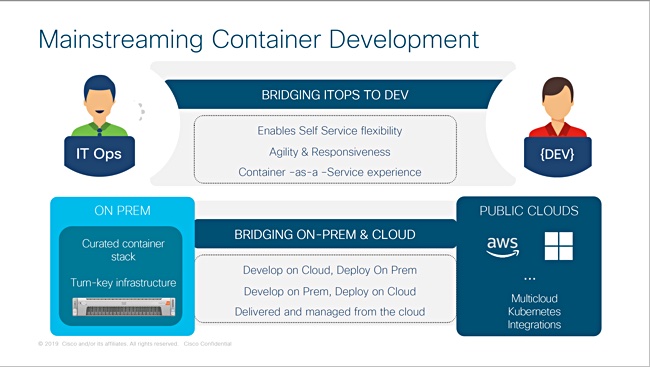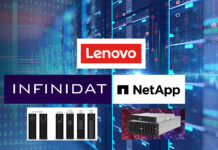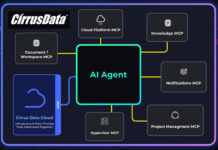Cisco’s hyperconverged HyperFlex system has been re-engineered to support containerisation with native Kubernetes and Intersight cloud-based management.
The rationale is that users need to be able to move apps between on-premises and public cloud environments. Cloud-native apps can do that efficiently and Kubernetes is the way to orchestrate them and their myriad components. Giving HyperFlex native Kubernetes (K8s) support, running on Linux, enables it to operate effectively in the hybrid, multi-cloud world.
Liz Centoni, SVP and GM for Cloud, Compute and IoT at Cisco, issued a quote saying: “With the HyperFlex Application Platform (HX-AP) we are making Kubernetes, the new de facto standard for app developers, much easier to deploy and manage for both app and infrastructure teams.”

Native HyperFlex Kubernetes
Up until now HyperFlex has supported K8s running in a VMware virtual machine, necessitating an ESXi license. Now customers can go one hundred per cent cloud-native with no intervening vSphere layer.
The Intersight management service has had container support added so it integrates with HX-AP.
With no virtual server layer, there is a common HX-AP environment shared by DevOps app teams and the infrastructure managers. Apps can be developed either in the public cloud or on-premises, with self-service resource provisioning attributes, and deployed anywhere – AWS and Azure for starters. The Google Cloud Platform will surely soon be supported as well.
Cisco says K8s HyperFlex has a curated stack of components above basic K8s, and a turn-key infrastructure, but supplied no component details. It functions as a container-as-a-service platform.
The cloud, compute and IoT GM blogged about HX-AP obviating customers from paying the V-tax, so to speak: “The HyperFlex Application Platform is designed to take the hard work out of K8s and make it as easy as deploying an appliance. We integrate the Kubernetes components and lifecycle manage the operating system, libraries, packages and patches you need for K8s.
“Plus, we manage the security updates and check for consistency between all components every time you deploy or upgrade a cluster. We then enable IT to deliver a Container-as-a-Service experience to developers – much like they are used to getting in the public cloud.”
Users can run HX-AP and traditional, VMware-based HyperFlex software on the same hardware should they wish. HyperFlex will also support bare metal Linux in the future.
Cloud and competition
Todd Brannon, senior director for Data Centre Marketing at Cisco, told Blocks & Files in a briefing that HX-AP “looks and feels like Kubernetes in the cloud.” He added: “The cloud is not a place but an operating model.”
Google has its Anthos cloud-based container services system, which enables application container movement between on-premises and the AWS, Azure and GCP clouds. How that will interoperate with HX-AP, if it does so, is not clear.
HPE and Google are providing a hybrid cloud for containers, using Anthos. It does yet support HPE’s hyperconverged systems, such as SimpliVity. Nimble storage is supported and HPE has its distributed HCI (dHCI) product using ProLiant servers and Nimble storage.
Cisco says Intersight can understand the resource needs for applications at all layers of the stack, for bare metal apps, ones running in virtual machines and also containerised ones. It integrates with Cisco’s AppDynamics performance monitoring software for this.
Intersight also has a Workload Optimiser function, a real-time decision engine, to help decide where, in the on-premises, multi-cloud environment, it’s bet to run an app. Together, Cisco says, HX-AP, Intersight and AppDynamics provide a closed-loop operating model.
HyperFlex Application Platform for Kubernetes will be available for early access in the second quarter of calendar 2020.








